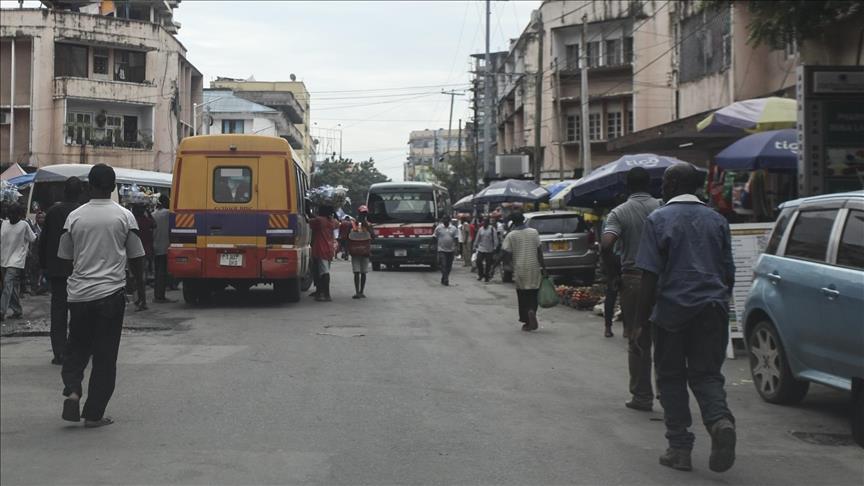Stuck in traffic at a packed intersection in Dar es Salaam, taxi driver Onesmo Kimaro eases his car forward, the engine humming as he inches closer to a gas filling station.
“I made the right decision switching to natural gas for fuel,” Kimaro said. “Diesel was just too expensive. I could barely make a good profit despite working so hard every single day.”
Kimaro is among a growing number of drivers in Tanzania’s commercial capital who have embraced compressed natural gas (CNG) to escape rising fuel costs. The shift is part of a broader national strategy to tap into the country’s vast gas reserves, providing motorists with a cleaner and more affordable alternative to petrol and diesel.
With proven reserves of 57 trillion cubic feet, Tanzania has enormous natural gas wealth with the potential to boost economic development, attract foreign investment, and power the country’s transition to cleaner energy.
To capitalize on this, the government is actively promoting the conversion of petrol and diesel vehicles to CNG, but analysts say there are still many gaps to be filled.
“The gas reserves we have are undoubtedly a big asset, but they must be managed with a clear, long-term strategy,” said Haji Semboja, an economics professor at Zanzibar University.
“The government must ensure that the benefits are widely shared rather than becoming a temporary wealth source for a few.”
Semboja stressed that without domestic infrastructure, the reserves risk being underutilized. “We need investment in refineries, pipelines, and power plants. Without these, the reserves will remain largely untapped,” he said.
Tanzania is in talks with major international energy companies, including Norway’s Equinor and the US-based ExxonMobil, to develop offshore reserves. Negotiations focus on tax terms, revenue-sharing, and large-scale projects like liquefied natural gas (LNG) plants and distribution pipelines.
The government says it is also pushing for agreements that prioritize job creation, local industry participation, and long-term economic stability.
– Infrastructure and cost barriers
While large-scale investments remain under negotiation, one area already seeing change is urban transport, with CNG rapidly gaining popularity among taxi drivers and public transit operators.
For instance, Dar es Salaam’s Bus Rapid Transit (BRT) system has already converted 60 buses to a petrol-CNG blend.
“CNG is a cheaper and cleaner alternative,” said Ismail Naleja, a supervisor at the Tanzania Petroleum Development Corporation (TPDC), the state-owned energy watchdog.
“One kilogram of CNG gives you the same mileage as 1.5 liters of petrol, which means huge savings.”
Still, adoption is slow, as the lack of CNG infrastructure remains a challenge. “The government has not established enough strategic partnerships to scale up CNG usage,” Semboja said.
“There are deals in the pipeline, but they’ve been delayed for years.”
Another major hurdle is the high cost of converting vehicles – around $1,000 (2.5 million Tanzanian shillings), a steep price in a country where the average monthly wage is significantly lower.
“It was a lot of money, but I had to do it to get some relief from high fuel prices,” said Juma Ramadhani, a 42-year-old taxi driver who took out a loan for the conversion. “Now I save almost half of what I used to spend on diesel. It’s a big relief.”
Others, though, are not as fortunate.
“I did the math and realized I’d need to work extra hours for months just to break even,” said Hussein Kweka, who operates a taxi at Julius Nyerere International Airport. “It’s a good investment, but only if you can afford it.”
While the government has reduced import duties on CNG kits and is working on subsidized conversion programs, Ezekiel Amri, an energy researcher at the Dar es Salaam Institute of Technology, warns that financing remains a major barrier.
“Without access to affordable loans or government-backed incentives, many drivers will stick to petrol even if they know it’s more expensive in the long run,” Amri told Anadolu.
Adding to the problem is limited access to refueling stations. Most CNG stations are located in Dar es Salaam, forcing drivers to carefully plan routes and often carry petrol as a backup.
“A friend ran out of gas near Chalinze and had to be towed back just to refill,” said Aziz Ridhwani, a driver who switched to CNG last year. “I save a lot of money, but it makes no sense if I can’t find a place to refill.”
The government has invested $150 million to expand CNG infrastructure, aiming to power 20,000 urban households and convert 20,000 vehicles in the next five years. Plans include new stations along key highways, but until these materialize, experts remain cautious.
“The demand is there, but investors are hesitant because setting up a station requires heavy capital and a steady customer base,” said Amri.
“Without a coordinated push from the government and private sector, growth will remain sluggish.”
– Environmental promise and future outlook
For environmental advocates, the growing adoption of CNG is a welcome step, as diesel engines – known for emitting black smoke – contribute to severe air pollution and health issues in urban areas.
“CNG burns cleaner, which could help improve air quality levels,” said Simon Mahoiga, a project manager at the Tanzania Association of Environmental Engineers.
However, Mahoiga emphasized that CNG is still only a temporary solution. “It’s better than diesel, but it’s still a fossil fuel. We need to think beyond that,” he said.
Tanzania’s broader energy strategy includes plans for green hydrogen, renewable electricity, and scaling up the use of gas for industrial and domestic applications. For now, CNG represents a practical compromise, but with some pressing issues that need to be addressed first.
“We know CNG is the future,” Kimaro, the taxi driver, said, looking through his windshield as traffic finally began to ease. “But for many of us, it’s just not within reach yet.”

